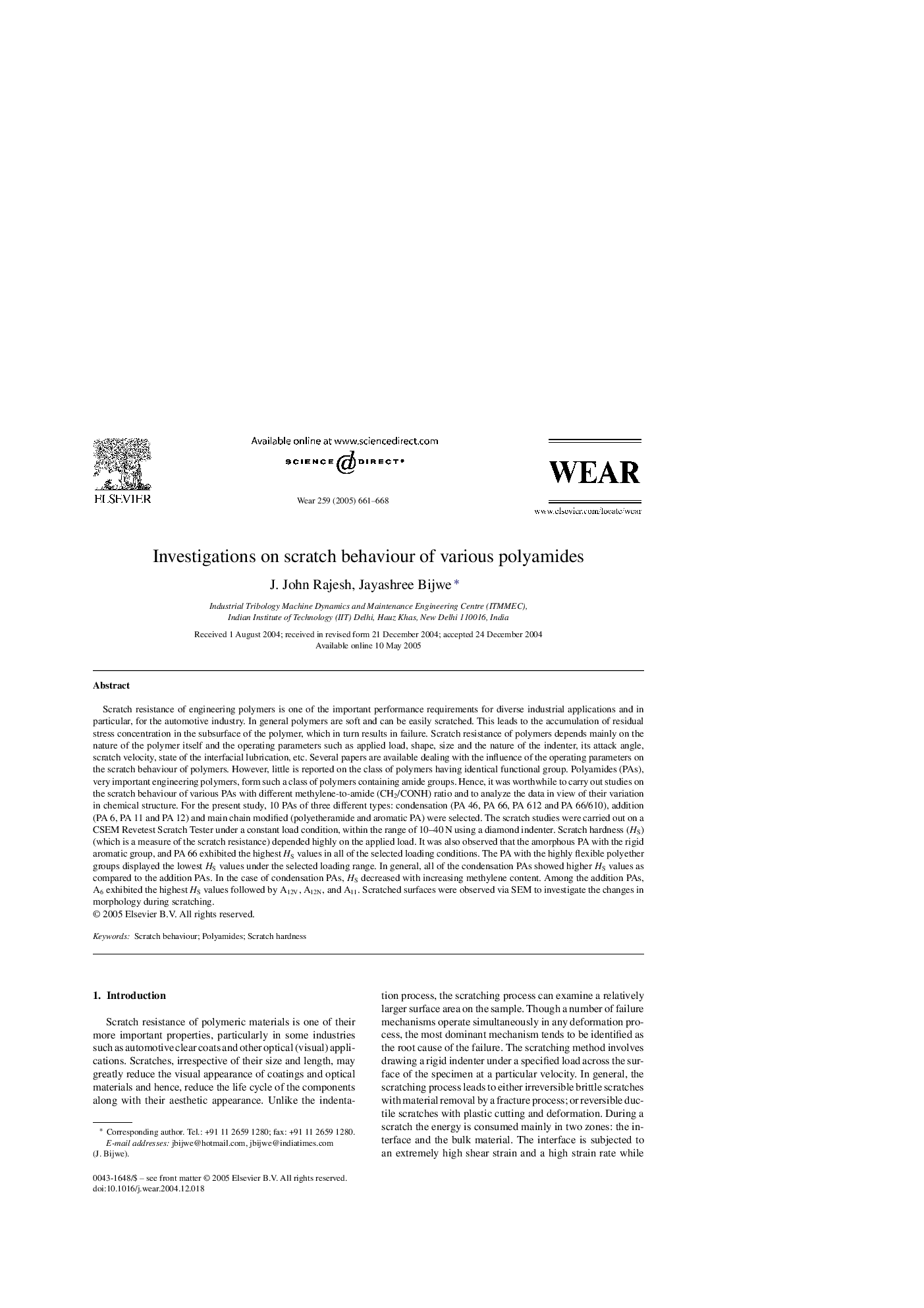| Article ID | Journal | Published Year | Pages | File Type |
|---|---|---|---|---|
| 9679467 | Wear | 2005 | 8 Pages |
Abstract
Scratch resistance of engineering polymers is one of the important performance requirements for diverse industrial applications and in particular, for the automotive industry. In general polymers are soft and can be easily scratched. This leads to the accumulation of residual stress concentration in the subsurface of the polymer, which in turn results in failure. Scratch resistance of polymers depends mainly on the nature of the polymer itself and the operating parameters such as applied load, shape, size and the nature of the indenter, its attack angle, scratch velocity, state of the interfacial lubrication, etc. Several papers are available dealing with the influence of the operating parameters on the scratch behaviour of polymers. However, little is reported on the class of polymers having identical functional group. Polyamides (PAs), very important engineering polymers, form such a class of polymers containing amide groups. Hence, it was worthwhile to carry out studies on the scratch behaviour of various PAs with different methylene-to-amide (CH2/CONH) ratio and to analyze the data in view of their variation in chemical structure. For the present study, 10 PAs of three different types: condensation (PA 46, PA 66, PA 612 and PA 66/610), addition (PA 6, PA 11 and PA 12) and main chain modified (polyetheramide and aromatic PA) were selected. The scratch studies were carried out on a CSEM Revetest Scratch Tester under a constant load condition, within the range of 10-40Â N using a diamond indenter. Scratch hardness (HS) (which is a measure of the scratch resistance) depended highly on the applied load. It was also observed that the amorphous PA with the rigid aromatic group, and PA 66 exhibited the highest HS values in all of the selected loading conditions. The PA with the highly flexible polyether groups displayed the lowest HS values under the selected loading range. In general, all of the condensation PAs showed higher HS values as compared to the addition PAs. In the case of condensation PAs, HS decreased with increasing methylene content. Among the addition PAs, A6 exhibited the highest HS values followed by A12V, A12N, and A11. Scratched surfaces were observed via SEM to investigate the changes in morphology during scratching.
Keywords
Related Topics
Physical Sciences and Engineering
Chemical Engineering
Colloid and Surface Chemistry
Authors
J. John Rajesh, Jayashree Bijwe,
